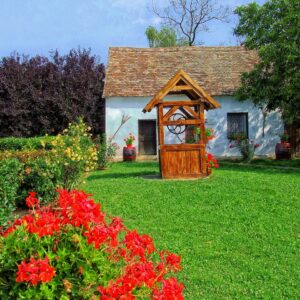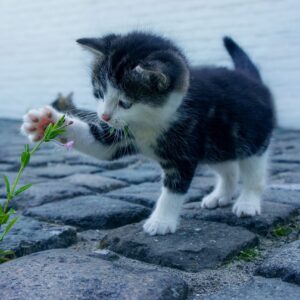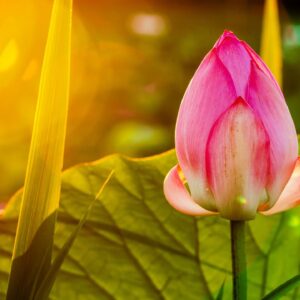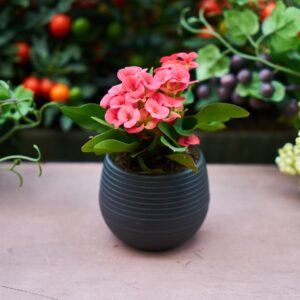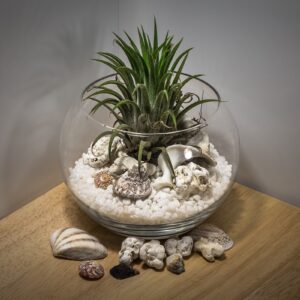You might be thinking that creating a terrarium is a daunting task, but fear not! With a few simple steps, you can make your own DIY terrarium for indoor decor that will bring a touch of nature into your home.
Not only is it a fun and creative project, but it also has numerous benefits for your mental and physical health. Creating a terrarium is an easy way to add a pop of greenery to your space, especially if you don’t have a lot of natural light or outdoor space.
Plus, it can serve as a mini oasis for you to escape to when you need a break from the hustle and bustle of everyday life. In this article, we’ll guide you through the process of choosing the right container, selecting the perfect plants, creating the right soil mix, adding decorative elements, and caring for your new terrarium.
So, let’s get started and bring a little bit of the outdoors in!
Choosing the Right Container for Your Terrarium
It’s crucial to select the appropriate vessel for your miniature garden to thrive. When it comes to creating a DIY terrarium, there are plenty of options to choose from. You can upcycle containers such as glass jars, mason jars, fishbowls, or even light bulbs. The key is to find a container that will accommodate the plants you want to include in your terrarium.
A large container is essential if you plan to create a diverse ecosystem with multiple species of plants, while a small container is ideal for a minimalist design with just a few plants. When selecting a container, keep in mind the style you want to achieve. You can find plenty of terrarium design inspiration online or on social media platforms like Instagram or Pinterest.
Look for designs that match your personal style and the overall theme of your home decor. With the right container and a little creativity, you can create a stunning DIY terrarium that will bring life and beauty to any room in your home.
Selecting the Perfect Plants for Your Terrarium
Now that you have your container ready, it’s time to choose the ideal plants to bring your mini-garden to life!
When selecting the perfect plants for your terrarium, it’s important to consider low maintenance and pet-friendly options. Some great options for low maintenance plants include succulents, air plants, and ferns. These plants require minimal watering and can thrive in a closed environment.
Additionally, if you have pets, it’s important to choose plants that are safe for them. Some pet-friendly plants include spider plants, Boston ferns, and African violets. These plants are non-toxic and won’t harm your furry friends if they happen to nibble on them.
In addition to choosing low maintenance and pet-friendly plants, it’s also important to consider the right lighting conditions for your terrarium. Different plants have different lighting requirements, so it’s important to choose plants that will thrive in the lighting conditions of your home.
For example, if your home gets a lot of natural light, you can choose plants that thrive in bright, indirect light such as succulents and air plants. Alternatively, if your home doesn’t get a lot of natural light, you can choose plants that can thrive in low light conditions such as ferns and mosses.
By carefully selecting the right plants for your terrarium and ensuring they have the right lighting conditions, you can create a beautiful and thriving indoor garden that will add life and color to your home.
Creating the Right Soil Mix
To create the perfect soil mix for your plants, start by choosing the right materials. Potting soil, sand, and perlite are the three main components you need to create a well-draining and nutrient-rich soil. The potting soil will provide the necessary nutrients for your plants, while the sand and perlite will help with drainage and aeration.

When choosing materials, make sure to use high-quality products that are free from harmful chemicals. Once you have your materials, mix equal parts of them together in a large container. Make sure to mix the soil thoroughly, ensuring that all the components are evenly distributed. This will ensure that your plants get the right amount of nutrients and water they need to thrive.
For watering techniques, make sure to use a spray bottle or a watering can with a fine nozzle to avoid overwatering your plants.
Adding Decorative Elements to Your Terrarium
Adding some personal flair to your terrarium can enhance its overall aesthetic and create a unique touch to your indoor garden. You can choose from a variety of decorative elements to add to your terrarium, such as miniature figurines and colored sand. These items can be found at your local craft store or online and come in a range of sizes and colors.
Miniature figurines are a fun addition to any terrarium and can be found in a variety of themes such as animals, fairies, and even superheroes. They add a touch of whimsy and personality to your terrarium and can be arranged in different ways to create a new look each time.
Colored sand is another great decorative element to add to your terrarium. It comes in a variety of colors and can be layered to create a beautiful gradient effect. Adding a pop of color can make your terrarium stand out and become a focal point in any room.
Caring for Your Terrarium: Tips and Tricks
So you’ve decided to take on the responsibility of nurturing and preserving a tiny ecosystem in your home – congratulations, you brave and ambitious soul.
One of the most important aspects of caring for your terrarium is to prevent pests from infesting it. You can do this by regularly checking your plants for any signs of insects and removing them immediately. You can also introduce natural predators like ladybugs or predatory mites to keep the pest population under control. Another effective method is to keep the terrarium clean and free of fallen leaves or debris that can attract pests.
Another crucial aspect of terrarium care is watering frequency. Since terrariums are enclosed environments, they require less water than traditional potted plants. It’s important to monitor the moisture level of the soil and only water when the soil is dry. Overwatering can lead to root rot and other issues, so be sure to use a spray bottle or watering can with a small spout to control the amount of water you add.
With these tips and tricks, you can ensure that your terrarium thrives and adds a touch of greenery to your indoor decor.
Frequently Asked Questions
What are some common mistakes to avoid when making a DIY terrarium?
When it comes to designing a terrarium, there are a few common mistakes that many people make. One of the most important things to keep in mind is to choose plants that have similar light and watering needs. If you mix plants with vastly different requirements, some will thrive while others will wither and die.
Another mistake is not considering the size of your container. If it’s too small, your plants won’t have enough room to grow and may become overcrowded. On the other hand, if it’s too big, your terrarium may look empty and sparse.
Lastly, make sure to pay attention to the type of soil you use. Regular potting soil may not drain properly and can lead to root rot. Instead, opt for a well-draining soil mix specifically designed for terrariums.
By avoiding these common mistakes, you’ll be well on your way to creating a beautiful and thriving terrarium.
Can succulents be used in a terrarium, or are they better suited for other types of indoor decor?
Looking to add a touch of green to your indoor decor? Succulent arrangements can be a great addition to any space, and they are perfect for terrariums. These low-maintenance plants come in a variety of shapes and sizes, and can be arranged in endless ways to create a unique and eye-catching display.
If you’re not ready to commit to real plants, there are also plenty of faux plant options that look just as beautiful, without the need for watering or sunlight.
Whether you’re a green thumb or a novice, succulent terrariums are a great way to add some natural beauty to your home or office.
How often should you water a terrarium, and what is the best way to do so?
Do you want to ensure the longevity of your terrarium? Then it’s essential to know how often to water it and the best way to do so.
The watering frequency for a terrarium depends on the type of plants you have and the environment they’re in. Generally, it’s recommended to water them every two to four weeks. However, it’s best to observe the soil’s moisture level and water only when it’s dry.
When it comes to watering, misting is the most common method, but pouring water directly into the soil can be more effective. Pouring allows the water to reach the roots and saturate the soil, while misting only adds humidity to the air.
Whatever method you choose, make sure not to overwater your terrarium as it can lead to root rot. By following these tips, your terrarium will thrive and become a beautiful addition to your indoor decor.
Can a DIY terrarium be made without using live plants, and if so, what are some good alternatives?
Looking for non-plant alternatives to make your DIY terrarium?
There are plenty of creative fillers you can use to add aesthetic appeal to your indoor decor. For example, you could use decorative rocks, colored sand, or even seashells to fill the bottom of your terrarium. These fillers can help add texture and visual interest to your creation, without having to worry about the maintenance of live plants.
Another option is to use artificial plants or flowers to create a lush, green environment without having to worry about watering or pruning. With a little creativity and a few non-plant alternatives, you can create a stunning DIY terrarium that will be the envy of all your friends.
How long can a terrarium typically last before needing to be replanted or refreshed?
Maintaining a terrarium is crucial to ensure its longevity. Typically, a well-maintained terrarium can last up to 2-3 years before needing to be refreshed or replanted.
To keep your terrarium thriving, it’s essential to choose plants that are best suited for a closed environment. Optimal plant choices are those that are low-maintenance, able to thrive in humid conditions, and require minimal watering. Some ideal plants for terrariums include ferns, mosses, and succulents.
Regular terrarium maintenance involves monitoring humidity levels, pruning overgrown plants, and removing any dead foliage. By taking proper care of your terrarium, you can enjoy its natural beauty for years to come.
Conclusion
Congratulations! You’ve successfully created your very own DIY terrarium for indoor decor. Just like every plant is unique, your terrarium is one-of-a-kind. It’s a miniature world that you’ve created, a reflection of your creativity and love for nature.
Your terrarium is like a tiny ecosystem, where plants, soil, and decorative elements work together harmoniously. With proper care, your terrarium will thrive and bring joy to your home. It’s like a metaphor for life, where all the different elements come together to create something beautiful.
So, sit back and admire your creation. Take pride in the fact that you’ve created something from scratch, something that will bring life and color to your indoor space. And who knows, maybe your terrarium will inspire others to create their own miniature world.
After all, the possibilities are endless when it comes to DIY terrariums.
